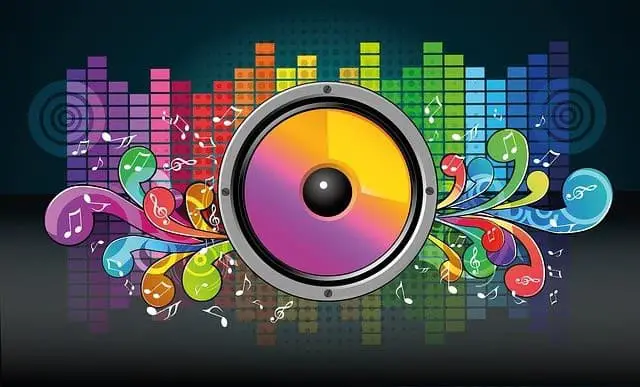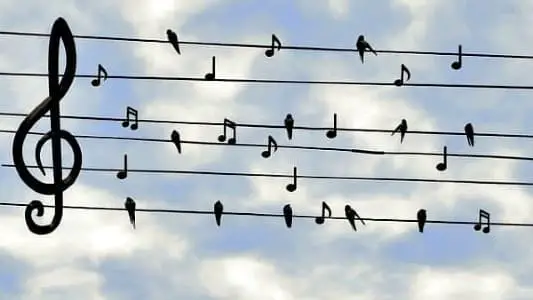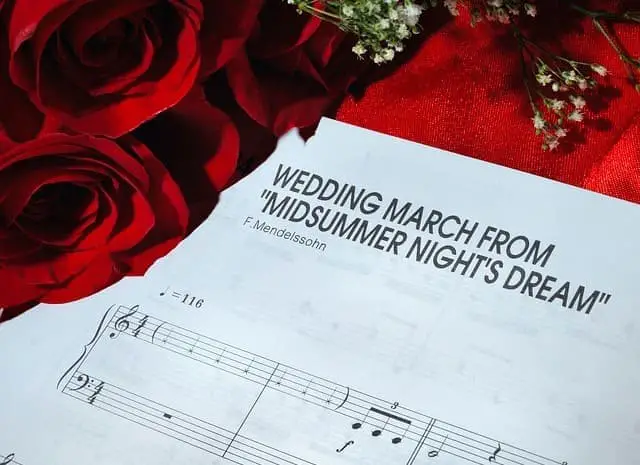- Home
- Basic Piano Theory
- Key Signatures
Music Key Signatures for Beginners
This article may contain compensated links. Please read the disclosure for more info.
Key signatures are groups of either sharps ♯ or flats ♭that you can see at the beginning of a staff, right after the clef (and before the time signature).
They tell us what notes are either raised (♯ ) or lowered (♭) throughout the whole piece.
Key Signature vs. Accidentals
This key-signature (3 sharps) below, is telling us that in this piece all the F, C and G's should be raised a semitone, or a half step (#):
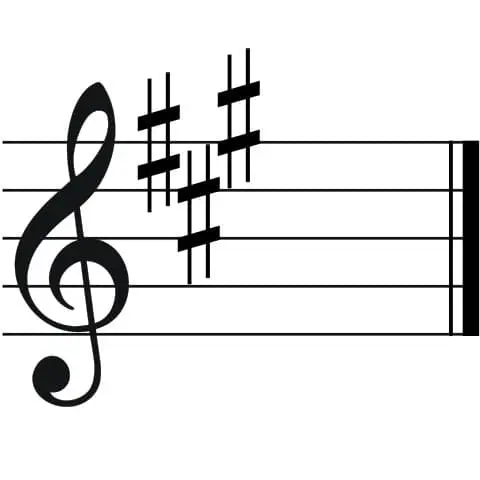 Key Signature for A major or F# minor.
Key Signature for A major or F# minor.The tonalities, or scales, that do this are A major and F# minor. So, the key is in A major or F# minor.
Accidentals, in contrast, are sharps ♯, flats ♭ or naturals♮, added in front of the notes wherever they are needed in the piece.
Accidentals last only for that particular note and measure.

Accidentals; sharps, flats and naturals, are written in front of the note where used.
Why Use a Key Signature?
The main reason for using a signature and not simply accidentals, is that it makes the music looks cleaner and easier to read.
 Here is a B major scale with accidentals.
Here is a B major scale with accidentals. Here is a B major scale with key signature.
Here is a B major scale with key signature.The signature represents a certain major or minor scale that the piece is made from. This is also called the tonality or key.
So, in theory- by looking at the key signature, a musician knows what scale to use and what sound to expect.
But, in reality it is much more flexible.
TIP: The fastest way to drill key signatures is with flashcards. Here is a good set to practice with: Key Signature Flashcards
Can Signatures Represent Any Scale or Mode?
Yes in theory they could. However, most often, they are used for pieces that are in major and minor.
Other types of scales and modes may use accidentals and an open signature (like C major):
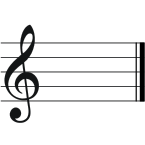 This is an "open" signature without sharps or flats. It's used for C major/A minor as well as for modal and atonal music.
This is an "open" signature without sharps or flats. It's used for C major/A minor as well as for modal and atonal music.But, even a piece in major or minor usually changes a lot.
It might modulate (move) to other keys, use different accidentals, and finally not be a major or minor scale at all!
The key can also be changed where needed in the piece. This is called a key change.
 Key change from C major to C minor. The new key signature is written after a double barline within the piece.
Key change from C major to C minor. The new key signature is written after a double barline within the piece.But, even though the key signature is very flexible, it still helps us to understand what scale the piece is mostly made from. We also know what chords, or diatonic harmony would be most common to use in this key.
Major and Minor Keys
There is a signature for each major and minor scale. Ouff! :)
But, the good news is that one signature represents both a major and its related minor scale. 2 in 1 so to speak.*
*Each major scale has a "relative" minor scale that uses the same notes. For example a C major scale and a (natural) A minor scale both use only the white keys, or 7 basic notes:
C major: C D E F G A B C
A (natural) minor: A B C D E F G A
Since both scales use the same notes (just in a different order), they are called relative scales.
How To Figure Out if a Composition is in Major or Minor?
If the signature has one sharp, it means it could be either G major or its relative; E minor.

Now check out the last note or bass note of the final chord. This is normally the tonic (the first note of the scale):
- If the last note (or chord) is an E, the piece is in E minor.
- If it is a G it is in G major.
This is because most pieces finish on a note/chord that sounds like «home» (tonic).
How Many Key Signatures Are There?

Courtesy of Encyclopædia Britannica
A major or minor scale can use up to 7 sharps or 7 flats. C major/A minor has no sharps or flats but still counts as a specific key.
So, that makes 7 + 7 + 1= 15 different signatures.
But, the funny thing is that some of those are actually sounding the same!
This is because some of the scales are enharmonic (sounding the same but with different names).
For example B major and Cb major have totally different signatures, but you play exactly the same notes:
 Here are a B major and a Cb major chord. They look different, but are played with the same notes!
Here are a B major and a Cb major chord. They look different, but are played with the same notes!So, do you use the B major or Cb major signature when composing?
The answer is; whatever you like (or how nasty you wanna be! :)
However, if you want easier reading, the B major signature is better since it uses only 5 sharps. Cb major uses 7 flats and is a bit awkward to read.
Helpful Resources
- Key Signature Flashcards
- The Circle of Fifths for Piano: Learn and Apply Music Theory for Piano & Keyboard
